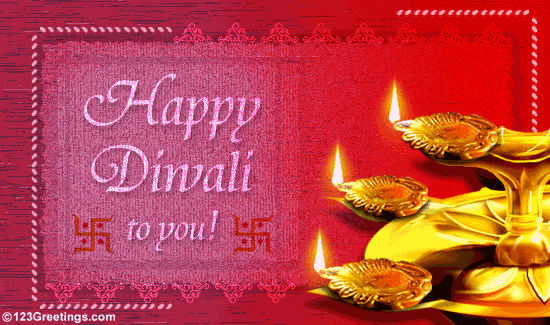H
appy Deepavali to all
Deepavali is a festival where people from all age groups participate. They give expression to their happiness by lighting earthen 'diyas' (lamps), decorating the houses, bursting firecrackers and inviting near and dear ones to their households for partaking in a sumptuous feast. The lighting of lamps is a way of paying obeisance to god for attainment of health, wealth, knowledge, peace, valor and fame.
While Deepavali is popularly known as the "festival of lights," its most significant esoteric meaning is "the awareness of the inner light."

Mythology

The festival of Diwali is associated with several different stories in Hindu mythology. Thus, Hindus find cause to celebrate this festival for various reasons. Yet, despite the regional variations, the festival universally marks the victory of good over evil:
In North India, Diwali is most popularly celebrated as the return of Lord Rama, King of Ayodhya, with his wife Sita and brother Lakshmana to Ayodhya from a war in which he killed the demon king Ravana. It is believed that the people lit oil lamps along the way to light their path in the darkness. This is the reason, why the festival is celebrated a day earlier in South India since Lord Rama travelled from the south to his kingdom in the north. In North India, the festival is held on the final day of the Vikram calendar. The following day marks the beginning of the North Indian new year, and is called Annakut.
In South India, Diwali (known as "Deepavali") is sometimes assocaited with the divine pair of Shiva-Shakti. According to the Skanda Purana, the goddess Shakti observed 21 days of austerity starting from ashtami of shukla paksha (eighth day of the waxing period of moon) to get half of the body of Lord Shiva. This vrata (vow) of austerity is known as kedhara vrata. Deepavali is the completion day of this austerity. This is the day Lord Shiva accepted Shakti into the left half of the form and appeared as Ardhanarishvara. The ardent devotees observe this 21 days vrata by making a kalasha with 21 threads on it and 21 types of offerings for 35 days. The final day is celebrated as kedhara gauri vrata.
Diwali is also sometimes associated with the killing of the evil demon Narakasura by Krishna's wife Sathyabhama. According to Hindu mythology, this event happened in the time of the Dwapara Yuga. In another version, the demon was killed by Lord Krishna himself. Before Narakasura's death, he requested a boon from his mother, Sathyabhama, that everyone should celebrate his death with colorful light.
Diwali is also closely associated with Lakshmi Puja where it is said that the Goddess Lakshmi's destroyer (marak) form is active. The puja allegedly destroys the distressing energies in the environment as well as invokes the arrival (in addition to Lakshmi) of other gods who are said to bring happiness, opulence, prosperity, stability and wealth.These gods are:
Lakshmi: Divine Energy (Shakti) which provides energy to all the above activities.
Vishnu: Happiness (happiness and satisfaction)
Indra: Opulence (satisfaction due to wealth)
Kuber: Wealth (one who gives away wealth)
Gajendra: Carries the wealth
Credits:New World Encyclopedia (deepavali mythology)
Edited by honeydaisy - 16 years ago






